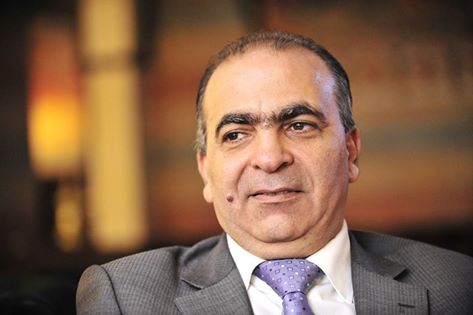Clashes have recently escalated between feuding Islamist groups Ahrar al-Sham and Hay’at Tahrir al-Sham — of which the Nusra Front forms the backbone — in all areas under control of the two parties in northern Syria, especially in Idleb province and near the crossings which are controlled by Ahrar al-Sham on the Turkish-Syrian border.
The Assad regime and its allies have worked for the past two years to expel the various groups of opposition militants who rejected fighting in their ranks after surrendering their besieged and devastated cities and districts toward Idleb and its countryside and the western Aleppo countryside.
This organized and systematic expulsion, aiming to prevent the displaced from Homs and the Damascus countryside from heading to the Ghouta and Homs countryside, which are still outside the control of the regime, Iran and Russia, has put thousands of fighters in this area who do not necessarily follow the leaders of either two factions. Subsequently, a contest has emerged between the factions to gain the loyalty of displaced fighters from Damascus’ districts and countryside and some areas of Homs with the hopes of incorporating their small groups.
Many of these have lost their support and require backing to pay their fighters and families. This competition has been accompanied by sporadic clashes between the two groups and the harsh pressure both have put on these displaced people and their families for their loyalty. The campaign to boost fighter numbers has pushed some of these families to prefer returning to their devastated districts which are now under the hegemony of the Assad mafia regime, fleeing from the tragic situation that was created by this pressure and permanent skirmishes between these two factions.
In addition to the forced displacement, the development of the political situation around Syria after the announcement of de-escalation zones has encouraged the two strongest factions in the region to try to gain sole hegemony in preparation for any possible deal.
The direct cause of the recent fighting
Nusra is afraid of the American-Russian plans to uproot it through support for rival factions, of which Ahrar al-Sham is the largest. For that reason, Nusra has tried to occupy its adversary’s positions and expel it from its areas of influence, especially after the faction received advice from Turkey, Qatar and the Syrian Muslim Brotherhood organization to change its flag — which shares a resemblance with the flags of Nusra and the Islamic State (ISIS) — and replace it with the Syrian independence flag.
This is not the first time that bloody clashes have broken out between the Al-Qaeda and Brotherhood currents of political Islam in Syria. But the current conditions which the opposition is facing will lead to harsher results and a burden on them and on the rest of the armed Islamist opposition in general, most importantly: 1) More than half of the territory which it had controlled has been usurped by the Iranian-Russian coalition in support of President Bashar al-Assad, and 2) They have been financially pressured through a campaign carried out by its backers and an attempt to dry up the sources of its funding and armament.
The collapse of the reputation of these groups and the reduction of their popular bases to the lowest level since the start of the Syrian revolution has proven the groups’ willingness to shed the blood of Syrians for the sake of field gains and delusions, which everyone knows will not change a thing in the balance of power, which is not in its favor.
The idea Assad and his allies have tried to spread since the beginning of the revolution is that the only alternative to its rule is bloodthirsty organizations which will lead the country into armed chaos and transform it into a haven for extremism and terrorism.
After Syrians have begun to see them as an obstacle to their dream of peace and stability, the need has become clear for there to be a Syrian entity outside the religious and ethnic gangs which is able to offer an alternative to these groups.
Despite the fact that this infighting will not lead to a restoration of the Assad mafia regime and deliver Iranian hegemony over Syria and the region, it could greatly delay the international efforts to speed up a political transition process in Syria to end the Syrian tragedy ongoing for more than six years and put an end to the rule of the corrupt and bloodthirsty Assad family.
This article was translated and edited by The Syrian Observer. Responsibility for the information and views set out in this article lies entirely with the author.


